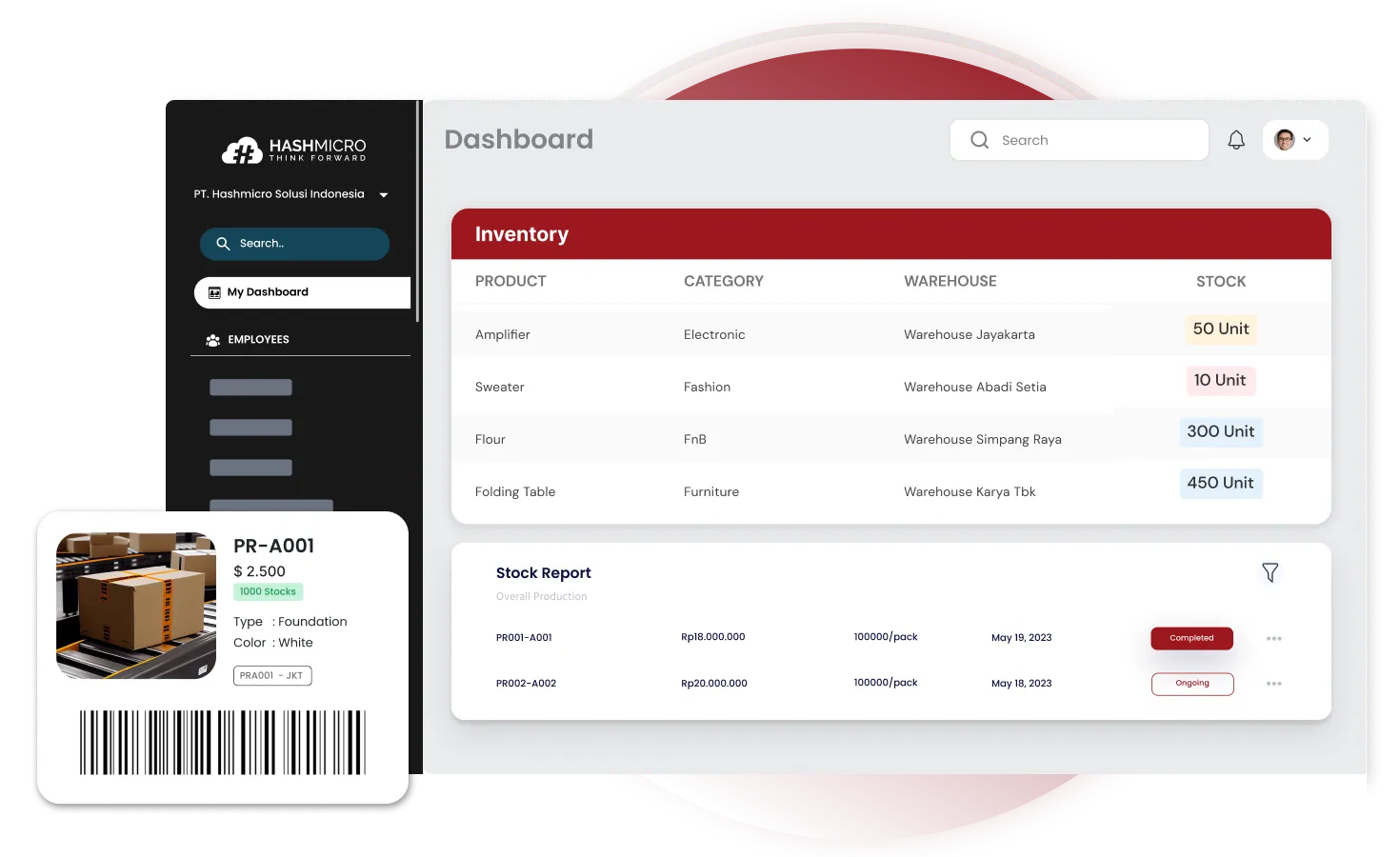Magandang araw, Business People! Are you here because there is something fishy about your stock that you need to do an inventory analysis? Or are you here because you want to know what inventory analysis can do to boost your business? Then, you’ve come to the right place.
According to Reliant Funding, 34% of businesses have delayed shipments due to unintentionally selling out-of-stock products. If you’re in the same shoes as those who struggle to manage their inventory, you must read this article until you finish.
We will give you a complete guide about problem inventory analysis, its goals, and the steps you should take to start analyzing. Nang walang karagdagang ako, sabay nating simulan ang talakayan.
Key Takeaways
|
Table of Contents

What is Inventory Analysis?
Inventory analysis is a process businesses use to evaluate their stock levels, ensuring they maintain optimal inventory to meet customer demand while minimizing costs. This management analysis helps companies track inventory report trends, identify inefficiencies, and make data-driven decisions.
Inventory analysis, first of all, helps avoid overstocking, which can increase storage costs. Secondly, it allows for more accurate purchasing planning, reducing the risk of stockouts. Lastly, inventory analysis enhances operational efficiency by speeding up decision-making processes with more precise data.
The Goals of Inventory Analysis in Business
 What is so important about inventory analysis? Does it give you many opportunities as an inventory analyst, leading to increased profitability?
What is so important about inventory analysis? Does it give you many opportunities as an inventory analyst, leading to increased profitability?
Imagine this: your company consistently over-purchased raw materials due to poor inventory tracking. This resulted in excess inventory, tying up cash flow and increasing storage costs. Naiintindihan mo ba kung gaano malubha ang sitwasyong ito?
Therefore, inventory analysis comes with 6 goals to achieve success, such as:
- Increase profit margins: Maximize profitability by reducing inventory-related costs and optimizing product availability.
- Optimize inventory levels: Ensure the right balance between supply and demand to avoid overstocking or stockouts.
- Enhance customer satisfaction: Guarantee that popular products are always in stock, thus improving the customer experience.
- Boost supplier relationships: Strengthen partnerships with suppliers by maintaining consistent and predictable ordering patterns.
- Support demand forecasting: Provide valuable insights into sales trends, allowing for more accurate future inventory planning.
- Minimize waste: Prevent the accumulation of obsolete or expired stock, reducing overall waste and associated costs.
If you are curious how problem inventory analysis can achieve the 6 goals above, why don’t you try to find the best deals through the following banner? Knowing the implementation cost helps you make the right decision. Click the banner below to get the best inventory system deals starting now.

7 Inventory Techniques You Can Do in Your Company
Business people, there are at least 7 inventory techniques that you can do every day to know the flow of stock in your warehouse. Here are the techniques:
|
Technique |
Description |
Benefits |
| SOS Analysis | Splits items into Seasonal and Off-Season categories. | Helps plan for seasonal demand changes, which are common in retail and agriculture. |
| GOLF Analysis | Sorts inventory by origin: Government, Local, Foreign. | Assists in managing local and international sourcing challenges. |
| FSN Analysis | Divide the stock into Fast, Slow, and Non-moving items. | Reduces storage costs by focusing on fast-moving items. |
| HML Analysis | Sorts inventory by cost: High, Medium, or Low. | Helps manage expenses by focusing on high-cost items. |
| ABC Analysis | ABC analysis of inventory management groups inventories into A, B, and C based on value and importance. | Prioritizes high-value items, essential for budget management. |
| VED Analysis | Classifies items as Vital, Essential, or Desirable based on their impact. | Ensures critical supplies are always available, preventing operational issues. |
| SDE Analysis | Group items by ease of procurement: Scarce, Difficult, or Easy. | Aids in sourcing, especially for hard-to-find items. |
Inventory Analysis KPI Metrics You Should Fulfill
 In a world where inventory has the power to affect your profitability, you should know the metrics of inventory analysis below to know early if what you are doing is working.
In a world where inventory has the power to affect your profitability, you should know the metrics of inventory analysis below to know early if what you are doing is working.
a. Gross Margin Return on Investment (GMROI)
This problem inventory analysis evaluates the profitability of your inventory by calculating the gross profit earned for every dollar invested in inventory.
Formula: GMROI = Gross Profit / Average Inventory Cost
b. Available to Promise (ATP)
Measure the amount of inventory available to fulfil customer orders without affecting other commitments, ensuring you can meet demand without overpromising.
Formula: ATP = (On-hand Inventory + Planned Production) – Customer Orders Due
c. Inventory Turnover Ratio (ITR)
Assess how quickly inventory is sold and replaced over a specific period, indicating the efficiency of inventory management software.
Formula: ITR = Cost of Goods Sold (COGS) / Average Inventory
d. Stockout rates
Management analysis monitors how often inventory levels fall to zero when there’s customer demand, which can lead to lost sales and customer dissatisfaction.
Formula: Stockout Rate = Number of Stockouts / Total Orders
e. Customer Service Level (CSL)
Track the percentage of customer demand met without backorders or stockouts, reflecting your ability to provide products on time.
Formula: CSL = (Orders Delivered on Time / Total Orders) x 100
f. Days Sales of Inventory (DSI)
Calculate the average number of days it takes to sell your entire inventory, with lower DSI indicating more efficient inventory management.
Formula: DSI = (Average Inventory / Cost of Goods Sold) x 365
g. Sell through rate
Measure the percentage of inventory sold during a specific period, helping you understand how quickly products are moving through the sales process.
Formula: Sell Through Rate = (Units Sold / Beginning Inventory) x 100
h. Back order rate
Evaluate the percentage of orders that cannot be fulfilled immediately and must be back-ordered, impacting customer satisfaction and operational efficiency.
Formula: Back Order Rate = (Number of Back Orders / Total Orders) x 100
How to Start Inventory Analysis Without Ruining Your Workflows
 Starting inventory analysis might seem daunting, but it doesn’t have to disrupt your existing inventory analyst workflows. By taking a strategic approach, you can integrate effective abc analysis of inventory management seamlessly into your operations, and here is how:
Starting inventory analysis might seem daunting, but it doesn’t have to disrupt your existing inventory analyst workflows. By taking a strategic approach, you can integrate effective abc analysis of inventory management seamlessly into your operations, and here is how:
1. Audit Your Stock Levels
First, a stock audit will be conducted to compare physical inventory with records. This will help find mismatches and outdated items and provide a solid basis for management analysis.
2. Align Your Inventory Analysis with Business Goals
Next, align your inventory analysis with your business goals. To improve cash flow, focus on reducing excess stock. This problem inventory analysis will ensure that your decisions support your business goals.
3. Use Inventory Software
Finally, leverage cloud inventory software to automate the process. With the right technology, you gain real-time data and minimize errors, speeding up your analysis and enhancing accuracy. But which software meets these advanced inventory analysis needs? Let’s get to know the answer down below.
Use the Best Inventory Software from HashMicro to Boost Your Businesses
 HashMicro has established itself as a leading software provider in Southeast Asia, with years of experience in delivering innovative business solutions. Since its establishment, the company has grown exponentially, earning the trust of over 1,750 clients.
HashMicro has established itself as a leading software provider in Southeast Asia, with years of experience in delivering innovative business solutions. Since its establishment, the company has grown exponentially, earning the trust of over 1,750 clients.
Today, HashMicro is a preferred choice for companies seeking reliable and efficient inventory management systems. To help you experience these benefits firsthand, HashMicro offers a free demo of their inventory software, giving you a hands-on look at how it can transform your operations.
Ready to discover its problem inventory analysis features? Tingnan natin ang mga punto sa ibaba:
- Stock forecasting: A system that analyzes past sales data, seasonal trends, and other factors to predict future demands for products.
- Run rate reordering rules: Estimate the number of products based on market trends and make sure the warehouse has enough items to meet demand without overstocking or running out of stock.
- Fast-moving, slow-moving stock analysis: Helps identify products with high or low turnover, enabling better stock planning, sales promotions, and removal of slow-sellers.
- Stock optimizer per warehouse: Maximize warehouse space utilization and boost operational efficiency in stock management.
Experience the difference HashMicro’s inventory software can make for your business. Connect with HashMicro’s team or try a free demo to see how our solutions can enhance your inventory management and drive your business forward.
Conclusion
In conclusion, inventory analysis is a crucial step you should take to boost your business. By providing the best inventory management software in the Philippines, HashMicro provides real-time tracking and many comprehensive features, enabling you to gain deeper insights into your stock levels and turnover rates.
If you want to know how the problem inventory analysis works in your company, take advantage of HashMicro’s advanced inventory analysis tools by scheduling a free demo. Make sure that you are experiencing the benefits of the inventory software firsthand.

FAQ About Inventory Analysis
-
Why is inventory analysis important?
Inventory analysis enables businesses to gain insights into their inventory levels, to enhance cash flow, minimize stockouts, and optimize overall operations. Regular and thorough inventory analysis is essential for maintaining efficiency and achieving these objectives.
-
What are the 4 types of inventory?
The four categories of inventory include raw materials, work-in-progress (WIP), finished goods, and maintenance, repair, and overhaul (MRO) supplies.
-
What does an inventory analyst do?
Inventory analysts play a crucial role across retail, wholesale, distribution, and manufacturing industries, assisting management in purchasing inventory, resource allocation, and sales forecasting. Often referred to as purchasing managers, they are key to optimizing an organization’s production and efficiency.



































